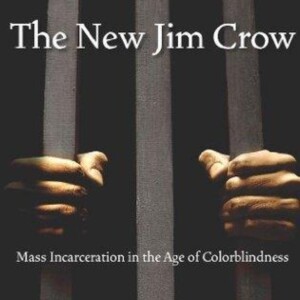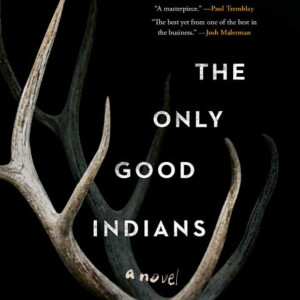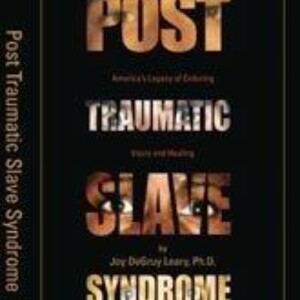Episodes

Tuesday Jul 01, 2025
Tuesday Jul 01, 2025
1 What's The Namesake
"The Namesake" by Jhumpa Lahiri explores themes of identity, belonging, and cultural dislocation through the life of Gogol Ganguli, the son of Bengali immigrants in America. The novel delves into Gogol's struggle with his name, which symbolizes his conflicted heritage and the pressure of cultural expectations. As he navigates the challenges of growing up in a foreign environment, the narrative highlights the generational divide between him and his traditional parents, Ashoke and Ashima, as well as the broader immigrant experience. Ultimately, Gogol's journey reflects the complexities of identity formation and the search for self-acceptance amid cultural differences.
2 Key Concepts of The Namesake
In Chapter 1 of "The Namesake," the theme of identity and cultural dislocation is introduced through Gogol Ganguli's parents, Ashoke and Ashima, as they navigate life in America while holding onto their Bengali roots. This theme recurs throughout the novel, particularly in Chapters 3, 5, and 7. In Chapter 3, Gogol’s struggles with his name and its significance reflect his internal conflict regarding his identity. In Chapter 5, his experiences at college further accentuate his sense of alienation and the complexities of cultural assimilation. By Chapter 7, Gogol’s relationship choices illustrate his ongoing challenges in reconciling his heritage with his personal desires, highlighting the theme's persistence throughout the narrative.
3 In-Depth Chapter Analysis of The Namesake by Jhumpa Lahiri
In "The Namesake" by Jhumpa Lahiri, the narrative is structured around the distinct phases of Gogol Ganguli's life, each chapter revealing the complexities of identity and belonging. In the early chapters, such as Chapter 1 and Chapter 3, the theme of cultural dislocation is pronounced through Gogol's experiences as a first-generation American child grappling with his Bengali heritage. For instance, in Chapter 1, Gogol’s struggle with his unusual name, a source of embarrassment and confusion in school, highlights his alienation and desire to assimilate into American culture, contrasting sharply with his parents' adherence to their roots. This conflict is emblematic of the broader theme of identity, as he feels caught between two worlds.
As the story progresses into later chapters, particularly Chapter 5 and Chapter 8, the theme deepens, exploring the complexities of familial relationships and the impact of loss. In Chapter 5, Gogol’s experiences at college and his fleeting relationships underscore his ongoing quest for identity, increasingly distancing him from his family's traditions. The poignant moment of Ashoke's death in Chapter 8 serves as a pivotal point in Gogol's journey, compelling him to confront his heritage. This act of mourning brings a newfound appreciation for his father’s legacy, as Gogol begins to embrace his name and its significance, ultimately signifying a reconciliation with his identity. Through these chapters, Lahiri powerfully illustrates the interplay between cultural heritage and personal growth, revealing how the struggles within family and self can lead to a deeper understanding of one's place in the world.
Book Summary Audio Bookey https://www.bookey.app/audiobook/the-namesake
Quotes https://www.bookey.app/book/the-namesake/quote
Youtube https://www.youtube.com/watch?v=IFIgzYVRfKk
Amazon https://www.amazon.com/Namesake-Novel-Jhumpa-Lahiri/dp/0618485228
Goodreads https://www.goodreads.com/book/show/33917.The_Namesake

Thursday Jun 26, 2025
Thursday Jun 26, 2025
1 What's Hour Of The Star
"Hour of the Star" by Clarice Lispector explores themes of identity, alienation, and the search for meaning through the life of Macabéa, a poor young woman living in Rio de Janeiro. The narrative, told from the perspective of a self-reflective author, delves into Macabéa's mundane existence and her struggles as an outsider, highlighting her innocence and the despair she faces in a harsh society that largely ignores her. The story poignantly examines the intersection of reality and fiction, examining the value of a person's life and the profound impact of societal indifference. Ultimately, it invites readers to reflect on the complexities of existence and the significance of individual stories within a broader context.
2 Key Concepts of Hour Of The Star
In "Hour of the Star" by Clarice Lispector, the theme of existential absurdity and the struggle for identity is established in Chapter 1, where the narrator reflects on the life of the protagonist, Macabéa. This theme resonates throughout the novel, particularly in Chapters 2 and 3, where Macabéa's mundane existence and her disconnection from society are further explored. These chapters illustrate her passive acceptance of her fate and highlight the absurdity of her struggles in a world that is indifferent to her existence. The theme of alienation and the search for meaning in an often cruel and indifferent universe persistently echoes throughout the narrative, providing a commentary on the human condition.
3 In-Depth Chapter Analysis of Hour Of The Star by Clarice Lispector
"Hour of the Star" by Clarice Lispector is a poignant exploration of identity, existence, and the socio-economic struggles faced by marginalized individuals. The novel is divided into chapters, each intricately tied to the central theme of alienation and the quest for self-understanding. For instance, in the opening chapters, we are introduced to Macabéa, a poor young woman living in Rio de Janeiro. Her mundane life—characterized by her meager job as a typist and lack of personal connections—serves to highlight the stark reality of social invisibility. Lispector employs a stream-of-consciousness narrative to delve into Macabéa's thoughts, illustrating her naive optimism yet profound sense of alienation. The interaction with her co-workers and her passive acceptance of her life encapsulate the theme of existential despair amid an indifferent society.
As the story progresses, particularly in the latter chapters, the theme of suffering and aspiration becomes more pronounced. The dramatic climax occurs when Macabéa faces a stark turning point, culminating in tragic circumstances that epitomize her struggles against the oppressive forces of her surroundings. The author juxtaposes Macabéa's yearning for love and recognition with her harsh reality, illustrating the futility of her dreams. The moments of reflection, particularly through the narrator's commentary, further deepen the exploration of existence as a fundamental question—highlighting how societal neglect can shape the psyche of individuals. Lispector's use of language and philosophical musings throughout the chapters serves to reinforce the interconnectedness of Macabéa's life experiences with broader themes of identity, existentialism, and the human condition.
Book Summary Audio Bookey https://www.bookey.app/audiobook/hour-of-the-star
Youtube https://www.youtube.com/watch?v=-EC-qLLPYcE
Amazon https://www.amazon.com/Hour-Star-Second-Clarice-Lispector/dp/0811219496
Goodreads https://www.goodreads.com/book/show/762390.The_Hour_of_the_Star

Tuesday Jun 24, 2025
Tuesday Jun 24, 2025
1 What's Cows
"Cows" by Matthew Stokoe explores themes of alienation, body horror, and the darker aspects of human nature through a surreal and unsettling narrative. The story revolves around a deeply troubled protagonist who delves into the grotesque and disturbing world of cattle farming, confronting the brutal realities of life and death. As the boundaries between humanity and the animal kingdom blur, Stokoe examines the instinctual drives that govern existence, all while creating a visceral atmosphere that challenges societal norms and provokes introspection about the nature of life, suffering, and the human condition.
2 Key Concepts of Cows
In "Cows" by Matthew St. James, Chapters 2, 4, and 6 notably relate to the theme introduced in Chapter 1, which explores the complexities of rural life and the interdependence between humans and animals. Chapter 2 delves into the daily routines of farm life, highlighting the sacrifices and rewards that come with agricultural work. Chapter 4 examines the relationships between farmers and their livestock, emphasizing the emotional bonds that develop over time. Finally, Chapter 6 reflects on the impact of modernity and technology on traditional farming practices, illustrating the ongoing struggle to maintain a connection with the land and the animals that inhabit it. Together, these chapters underscore the intricate balance of life on the farm, as introduced in the opening chapter.
3 In-Depth Chapter Analysis of Cows by Matthew Stokoe
In "Cows" by Matthew Stokoe, the chapters intricately weave together themes of isolation, survival, and the human condition through visceral imagery and stark narratives. In the early chapters, the protagonist grapples with his detachment from society, depicted through his interactions with the environment and the cows he tends. The stark reality of farm life is highlighted in Chapter 3, where the physical labor mirrors the emotional burden he carries, signifying a struggle for connection in a seemingly indifferent world. The repeated imagery of the cows, embodying both vulnerability and a primal instinct for survival, serves to parallel the protagonist’s own internal battles, illustrating a profound commentary on existence.
As the narrative progresses, particularly in Chapter 6, the theme of survival intensifies, exploring not just physical endurance but also psychological survival amid grotesque circumstances. The stark and often brutal depiction of life and death on the farm illustrates a cycle of violence and sustenance, forcing the protagonist to confront the moral implications of his actions. This chapter serves as a pivotal moment, connecting to the broader theme of the human struggle for meaning within a harsh reality. The visceral experiences—a foreshadowing of impending loss and transformation—culminate in a reflection on the fragility of existence, blending the grotesque and the mundane in a haunting meditation on life’s cyclical nature. Thus, each chapter meticulously builds upon the central themes, creating a compelling exploration of humanity through the lens of rural life.
Book Summary Audio Bookey https://www.bookey.app/audiobook/cows
Youtube https://www.youtube.com/watch?v=ug8UNnbGQ28
Amazon https://www.amazon.com/Cows-Mr-Matthew-Stokoe/dp/0987453661
Goodreads https://www.goodreads.com/book/show/815760.Cows

Monday Jun 23, 2025
Monday Jun 23, 2025
1 What's The New Jim Crow
"The New Jim Crow: Mass Incarceration in the Age of Colorblindness" by Michelle Alexander argues that the U.S. criminal justice system functions as a contemporary system of racial control, akin to the Jim Crow laws of the past. Alexander contends that mass incarceration disproportionately affects African American communities and perpetuates systemic racism through policies that criminalize poverty and enforce social stigmas. The book highlights how discriminatory practices in policing, sentencing, and parole maintain a racial caste system, ultimately limiting opportunities for millions of individuals while fostering a social narrative that dismisses the realities of systemic inequality.
2 Key Concepts of The New Jim Crow
In "The New Jim Crow," Chapter 1 introduces the theme of mass incarceration as a contemporary system of racial control that perpetuates racial and social hierarchies. Subsequent chapters, particularly Chapter 2 ("The Lockdown") and Chapter 3 ("The Color of Justice"), further develop this theme by examining the systemic injustices within the criminal justice system, such as discriminatory policing practices and biased legal proceedings that disproportionately target African Americans. Chapter 4 ("The Cruel Hand") highlights the consequences of a felony record, which effectively disenfranchises and marginalizes individuals, creating barriers to employment, housing, and voting. Together, these chapters illustrate how mass incarceration functions similarly to the old Jim Crow laws, sustaining racial inequality and oppression in society.
3 In-Depth Chapter Analysis of The New Jim Crow by Michelle Alexander
In "The New Jim Crow," Michelle Alexander meticulously explores the intersection of race and the criminal justice system across several compelling chapters, each underscoring the systematic racial discrimination that persists in contemporary America. Chapter 1 introduces the notion of mass incarceration as a pivotal mechanism of social control, drawing parallels to the historical Jim Crow laws. Alexander highlights how the war on drugs disproportionately targets Black communities, using statistics to illustrate that, despite similar rates of drug use, African Americans are far more likely to be arrested and imprisoned. This lays the foundation for the book's central argument that racism has evolved into a new form, manifesting through legal structures rather than overtly discriminatory laws.
In subsequent chapters, Alexander delves deeper into the implications of a racially biased criminal justice system. Chapter 2 focuses on the processes that lead to such disparities, including police practices and sentencing policies that are often racially motivated. The author recounts personal narratives and case studies that reveal how individuals, once labeled felons, face disenfranchisement and social stigma, resulting in a cycle of poverty and marginalization. This chapter emphasizes the theme of systemic oppression, illustrating how the criminal justice system perpetuates inequality, mirroring the effects of Jim Crow laws by stripping individuals of their rights and relegating them to a second-class status. Together, these chapters illuminate how mass incarceration serves as a contemporary racial caste system, inflicted upon those most vulnerable in society.
Book Summary Audio Bookey https://www.bookey.app/audiobook/the-new-jim-crow
Quotes https://www.bookey.app/book/the-new-jim-crow/quote
Youtube https://www.youtube.com/watch?v=Gln1JwDUI64
Amazon https://www.amazon.com/New-Jim-Crow-Incarceration-Colorblindness/dp/1595586431
Goodreads https://www.goodreads.com/book/show/6792458-the-new-jim-crow

Friday Jun 20, 2025
Friday Jun 20, 2025
1 What's The Only Good Indians
"The Only Good Indians" by Stephen Graham Jones explores themes of identity, cultural trauma, and the haunting impact of past choices within the Native American experience. The story follows four Blackfeet men who, years after a fateful hunting trip, find themselves stalked by a supernatural force seeking vengeance for their actions, which violate the sacred traditions of their community. As the narrative unfolds, it delves into the complexities of living between worlds—the struggles of maintaining cultural identity in a modern society, the consequences of their decisions, and the ways in which their past continues to shape their present. The blend of horror and social commentary highlights the enduring scars of colonialism and the need for reconciliation with one’s heritage.
2 Key Concepts of The Only Good Indians
In "The Only Good Indians" by Stephen Graham Jones, Chapter 1 introduces the theme of cultural identity and the haunting impact of past choices. This theme is intricately woven throughout the novel, particularly in Chapters 2, 5, and 11, where the characters grapple with the consequences of their actions and the deep-seated connections to their Native American heritage. These chapters explore how the characters' experiences reflect their struggles with identity, memory, and the persistent influence of their environment, showcasing the complexities of navigating modern existence while confronting ancestral legacies.
3 In-Depth Chapter Analysis of The Only Good Indians by Stephen Graham Jones
In "The Only Good Indians," Stephen Graham Jones skillfully weaves a narrative that examines themes of identity, cultural legacy, and the trauma of the past through its distinct chapters, each focusing on different characters and moments that reveal how these themes resonate within Native American life. For instance, in the first chapter, we meet Louis, whose life is marked by a hunting incident from a decade prior that haunts him in the present. This chapter illustrates the struggle against the ghosts of one's choices, emphasizing the weight of cultural responsibilities and how the past can invade the present, leading to a profound sense of guilt and fear. Louis's internal conflict is emblematic of the broader theme of how historical traumas impact contemporary Native identities.
As the narrative progresses into subsequent chapters, such as the pivotal chapter focused on Gabe and the deer, the theme of survival and the complexities of modern Native identity become even more pronounced. Gabe's experience with the deer he encounters conjures deep connections to ancestral ties and the nature of spirituality. Here, the cyclical nature of life and death plays a crucial role, suggesting that the struggle between traditional values and modern existence is a central conflict for Native individuals. Jones's multifaceted storytelling reveals how each character grapples with their past and cultural heritage, ultimately culminating in a broader commentary on the Indigenous experience in contemporary society. This intertwining of personal struggle with collective history solidifies the thematic foundation of "The Only Good Indians."
Book Summary Audio Bookey https://www.bookey.app/audiobook/the-only-good-indians
Quotes https://www.bookey.app/book/the-only-good-indians/quote
Youtube https://www.youtube.com/watch?v=ufXtGkPQEDA
Amazon https://www.amazon.com/Only-Indians-Stephen-Graham-Jones/dp/1982136456
Goodreads https://www.goodreads.com/book/show/52180399-the-only-good-indians

Friday Jun 13, 2025
Friday Jun 13, 2025
1 What's Crier's War
"Crier's War" by Nina Varela is a fantasy novel set in a world where humans and automae, sentient beings created to serve them, grapple with issues of power, identity, and love. The story primarily follows two protagonists: Crier, an heiress automa who struggles with her programmed loyalties and the expectations of her society, and Ayla, a human girl driven by a desire for revenge against the automae for past injustices. As their paths intertwine, the novel explores themes of rebellion, the complexity of human emotions versus artificial constructs, and the fight for autonomy and acceptance in a world marked by prejudice and inequality, ultimately culminating in a poignant examination of love that challenges societal boundaries.
2 Key Concepts of Crier's War
In "Crier's War" by Nina Varela, the theme of power dynamics and the struggle for agency is prevalent throughout the novel. In addition to Chapter 1, this theme is particularly evident in Chapter 2, where the inequities between humans and the Automae are starkly illustrated, highlighting how societal structures dictate the characters' lives. Chapter 4 further explores the internal conflicts of the protagonists as they navigate their desires for autonomy amid oppressive systems. Chapter 7 deepens this theme by showcasing pivotal moments that challenge traditional roles and provoke questions about identity and rebellion, ultimately underscoring the characters' quest for power and self-determination.
3 In-Depth Chapter Analysis of Crier's War by Nina Varela
In "Crier's War" by Nina Varela, the early chapters lay the groundwork for the intricate relationship between the themes of power, identity, and forbidden love. In Chapter 1, we are introduced to Aylen, a human who lives under the oppressive rule of the Automa, a race of robotic beings. This chapter illustrates the power dynamics at play, showcasing the animosity and resentment held by humans towards their Automa rulers. For instance, Aylen’s disdain for the Automa is palpable, emphasizing the theme of oppression and the struggle for freedom. This contrasts sharply with Crier, the Automa princess, who grapples with her own identity and emotions, particularly in Chapter 5, where her curiosity about humans and her emerging feelings for Aylen signify a burgeoning awareness that challenges her programmed beliefs.
As the story unfolds, the connection between Aylen and Crier deepens, particularly in Chapter 7, where they share a pivotal moment that explores both vulnerability and desire. Here, the author brilliantly weaves themes of love and rebellion as they confront societal expectations and their own identities. Their interactions highlight the tension between duty and desire, showcasing the lengths to which they are willing to go to defy their worlds. This intertwining of personal and political struggles illustrates a profound commentary on the nature of power and love, ultimately driving home the message that the fight for agency often transcends the boundaries set by oppressive regimes.
Book Summary Audio Bookey https://www.bookey.app/audiobook/crier's-war
Quotes https://www.bookey.app/book/crier%27s-war/quote
Youtube https://www.youtube.com/watch?v=EyIMwb90lBU
Amazon https://www.amazon.com/Criers-War-Nina-Varela/dp/0062823949
Goodreads https://www.goodreads.com/book/show/41951626-crier-s-war

Thursday Jun 12, 2025
Thursday Jun 12, 2025
1 What's The Love That Split the World
"The Love That Split the World" by Emily Henry explores the themes of love, identity, and the complexities of navigating relationships across different realities. The story follows Natalie, a high school senior who experiences time slips that transport her to alternate versions of her life, where she grapples with her feelings for her best friend, Beau. As she faces the pressures of impending adulthood and the challenges of her family's expectations, Natalie must decipher the nature of her reality and the significance of her connections. The novel delves into the magical realism of love and fate, ultimately emphasizing the importance of self-discovery and the choices that define our paths.
2 Key Concepts of The Love That Split the World
In "The Love That Split the World" by Emily Henry, Chapter 1 introduces the theme of love intertwined with the complexities of time and reality. This theme reverberates throughout several subsequent chapters, particularly in Chapters 7 and 15. In Chapter 7, Natalie grapples with her feelings for them, exploring the nature of her connection with him and how it transcends time and space. Meanwhile, Chapter 15 deepens this exploration as she confronts the consequences of her choices and the intertwining of her emotions with her experiences of alternate realities. Together, these chapters underscore the profound impact of love on personal identity and the passage of time that begins in the opening chapter.
3 In-Depth Chapter Analysis of The Love That Split the World by Emily Henry
In "The Love That Split the World" by Emily Henry, the chapters intricately weave themes of love, identity, and the complexities of time and choice. For instance, early chapters establish Natalie’s tumultuous relationship with her enigmatic world, emphasizing her struggle with what feels real and the disconnection she experiences from her surroundings. This is epitomized in Chapter 1, where she encounters the mysterious figure of "the woman in the door," which symbolizes the pivotal moments that intertwine her fate with that of her love interest, Beau. This resonance illustrates the broader theme of how love can transcend time and space, shaping personal identity amidst chaos.
As the narrative progresses, particularly in the middle chapters—such as Chapter 5, when Natalie begins to understand the supernatural elements affecting her life—the connection between love and the choices we make becomes increasingly clear. Natalie's exploration of her relationship with Beau progresses, though fraught with challenges, highlighting the theme of love as both a unifying and a disruptive force. This chapter, rich with emotional depth, showcases her internal conflicts and the realization that every choice carries weight, ultimately leading to a profound understanding of who she is and who she can become through love. Overall, Henry’s depiction of Natalie's journey illustrates the essential narrative that love is not simply a destination but a transformative experience that shapes one’s identity across time and space.
Book Summary Audio Bookey https://www.bookey.app/audiobook/the-love-that-split-the-world
Quotes https://www.bookey.app/book/the-love-that-split-the-world/quote
Youtube https://www.youtube.com/watch?app=desktop&v=oVGgkbBh9DE
Amazon https://www.amazon.com/Love-That-Split-World/dp/1595148515
Goodreads https://www.goodreads.com/book/show/25467698-the-love-that-split-the-world

Wednesday Jun 11, 2025
Wednesday Jun 11, 2025
1 What's Sliding Into Home
"Sliding Into Home" by Kendra Wilkinson is an introspective memoir that chronicles her journey from being a reality TV star on "The Girls Next Door" to navigating the complexities of motherhood, personal challenges, and self-discovery. The book delves into Wilkinson's experiences with fame, her tumultuous relationship with Hugh Hefner, and the struggles she faced after leaving the iconic Playboy Mansion. Through candid anecdotes and reflections, she explores themes of resilience, identity, and the pursuit of happiness amid life's ups and downs, ultimately offering readers a heartfelt look at her desire for a fulfilling and authentic life.
2 Key Concepts of Sliding Into Home
In "Sliding Into Home" by A2-V2, Chapter 1 introduces the theme of perseverance and resilience in the face of life's challenges. This theme resonates throughout several chapters, particularly in Chapters 5 and 8. Chapter 5 illustrates the protagonist's struggle to overcome personal setbacks, showcasing their determination to rise above adversity. Likewise, Chapter 8 emphasizes the importance of community support and personal growth, reinforcing how the protagonist draws strength from their experiences and relationships, further underscoring the theme established in the opening chapter.
3 In-Depth Chapter Analysis of Sliding Into Home by Kendra Wilkinson
In "Sliding Into Home," Kendra Wilkinson's narrative unfolds across various chapters that each highlight significant themes of personal growth, resilience, and the complexity of relationships. For instance, in Chapter 3, Kendra reflects on her tumultuous upbringing and the challenges of adolescence, illustrating the theme of resilience. She candidly shares her struggles with self-image and identity, framed against the backdrop of her endeavors to find acceptance within her family and social circles. This chapter serves as a poignant example of how Kendra's past experiences shape her tenacity and determination to carve out her identity amidst external pressures.
As the story progresses to Chapter 8, the theme of relationship complexities takes center stage, particularly in Kendra's exploration of her romantic entanglements and friendships. Here, she discusses her relationship with Hugh Hefner and the emotional rollercoaster it entailed, emphasizing the conflict between her aspirations and the unique dynamics within the Playboy mansion. Through detailed anecdotes, Kendra examines the sacrifices she made and the lessons learned, ultimately portraying a journey of self-discovery and empowerment. This chapter encapsulates her evolution as she navigates love, fame, and her quest for authenticity in an often superficial world, underscoring the overarching themes of growth and the pursuit of personal happiness.
Book Summary Audio Bookey https://www.bookey.app/audiobook/sliding-into-home
Youtube https://www.youtube.com/watch?v=CQ8tc1zIdsI
Amazon https://www.amazon.com/Sliding-Into-Home-Kendra-Wilkinson/dp/1439180911
Goodreads https://www.goodreads.com/book/show/7684648-sliding-into-home

Tuesday Jun 10, 2025
Tuesday Jun 10, 2025
1 What's Post Traumatic Slave Syndrome
"Post Traumatic Slave Syndrome" by Joy DeGruy Leary explores the lasting psychological and emotional impacts of slavery on African Americans and how these historical traumas have been passed down through generations. The book argues that the effects of systemic racism and the legacy of slavery create a cycle of trauma that manifests in various forms, including mental health issues, behavioral problems, and socio-economic challenges. DeGruy presents a framework for understanding these phenomena and emphasizes the importance of healing and education to break the cycle, advocating for a deeper recognition of historical injustices and their contemporary implications.
2 Key Concepts of Post Traumatic Slave Syndrome
In "Post Traumatic Slave Syndrome," Dr. Joy DeGruy explores the lasting impact of slavery on African American culture and identity. The theme introduced in Chapter 1 revolves around the psychological trauma and behavioral manifestations stemming from historical oppression. Subsequent chapters that relate to this theme include Chapter 2, which delves into the historical context of slavery and its effects on family structures, and Chapter 4, which examines the intergenerational transmission of trauma and how it manifests in contemporary behavior and relationships within African American communities. These chapters build on the foundational concepts of trauma and resilience introduced in the first chapter, illustrating the deep-rooted and complex legacy of slavery.
3 In-Depth Chapter Analysis of Post Traumatic Slave Syndrome by Joy DeGruy Leary
In "Post Traumatic Slave Syndrome," Joy DeGruy Leary explores the historical and psychological impacts of slavery on African American communities through several distinct chapters. One key chapter is Chapter 3, where she delves into the concept of "historical trauma," illustrating how the collective experiences of slavery, segregation, and discrimination have resulted in deep-seated psychological effects that persist across generations. For example, Leary details how the trauma of enslavement has influenced modern behaviors and societal roles, creating what she identifies as a cycle of damage that manifests in issues such as low self-esteem, community disconnection, and internalized oppression. This chapter underscores the theme of the long-lasting repercussions of slavery and sets the groundwork for understanding the need for healing and reclamation of identity.
Another pivotal chapter is Chapter 7, which focuses on resilience and the potential for healing within African American communities. Leary emphasizes the strength and endurance of Black culture, highlighting examples of community leaders and initiatives that aim to promote mental health and well-being. For instance, she discusses the role of cultural pride and family connections in fostering resilience, illustrating how these elements serve as coping mechanisms against the backdrop of historical trauma. By showcasing both the painful legacy of systemic oppression and the empowering strategies for overcoming it, this chapter reinforces the overarching theme of survival and recovery, demonstrating that despite the generational scars of slavery, there exists a path toward healing and strength in community solidarity.
Book Summary Audio Bookey https://www.bookey.app/audiobook/post-traumatic-slave-syndrome
Youtube https://www.youtube.com/watch?v=Rorgjdvphek
Amazon https://www.amazon.com/Post-Traumatic-Slave-Syndrome-Americas/dp/0963401122
Goodreads https://www.goodreads.com/book/show/432113

Monday Jun 09, 2025
Monday Jun 09, 2025
1 What's Kingdom of Ash
"Kingdom of Ash," the concluding installment of Sarah J. Maas's "Throne of Glass" series, weaves a tale of resilience, sacrifice, and the enduring power of love amidst a backdrop of war and betrayal. The story follows Aelin Galathynius and her allies as they confront the looming darkness brought by the face of tyranny, the king of the Valg. As the characters grapple with their pasts and forge alliances, themes of identity, redemption, and the strength found in unity emerge. The narrative balances heart-wrenching losses with moments of hope, culminating in a climactic battle for freedom that tests the bonds of friendship and courage, ultimately highlighting the idea that true strength comes from embracing one's heritage and the connections forged with others.
2 Key Concepts of Kingdom of Ash
In "Kingdom of Ash" by Sarah J. Maas, themes introduced in Chapter 1, such as sacrifice, resilience, and the struggle against impending darkness, are echoed throughout several key chapters. Notably, themes of sacrifice resonate deeply in Chapter 20, where characters confront their past choices and embrace their fates for the greater good. Additionally, the moments in Chapter 34 highlight the importance of unity and resilience amidst overwhelming challenges as allies come together to confront the looming threat. Together, these chapters encapsulate the overarching narrative of perseverance and the personal costs of war that are central to the story.
3 In-Depth Chapter Analysis of Kingdom of Ash by Sarah J. Maas
In "Kingdom of Ash," the final installment of Sarah J. Maas's Throne of Glass series, the chapters intricately weave together themes of sacrifice, resilience, and the enduring power of love. For instance, in the early chapters, the struggles faced by Aelin as she navigates her imprisonment underscore the sacrifices made in the name of duty and the heavy burdens of leadership. Her resolve to protect her loved ones, particularly in the face of overwhelming odds, illustrates the theme of resilience. The harrowing experience of Aelin's trials in her captivity highlights not only her strength but the lengths to which one will go to for love and loyalty. This is particularly evident when she reflects on her friends and their support, reminding readers of the importance of camaraderie in overcoming darkness.
As the story progresses, the narrative shifts to other pivotal characters, such as Chaol and Manon, who also embody the themes of sacrifice and the fight against despair. In their respective chapters, both characters undergo significant development, facing their own personal battles that mirror Aelin's. Manon's journey toward understanding her identity and embracing her role in the greater conflict exemplifies the theme of personal growth amid chaos. The climactic chapters culminate in a final showdown that emphasizes collective strength and the irreplaceable bonds formed through shared struggles. The resolution of their arcs showcases that while individual sacrifices are crucial, it is the connections forged with others that ultimately empower the fight against tyranny, encapsulating the overarching message of hope and unity in the face of despair.
Book Summary Audio Bookey https://www.bookey.app/audiobook/kingdom-of-ash
Quotes https://www.bookey.app/book/kingdom-of-ash/quote
Youtube https://www.youtube.com/watch?v=79Ec0NSLToc
Amazon https://www.amazon.com/Kingdom-Throne-Glass-Sarah-Maas/dp/1619636107
Goodreads https://www.goodreads.com/book/show/76715522-kingdom-of-ash








